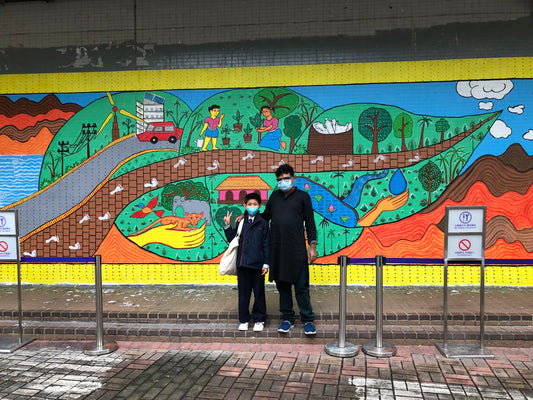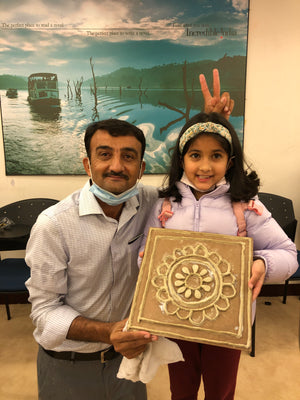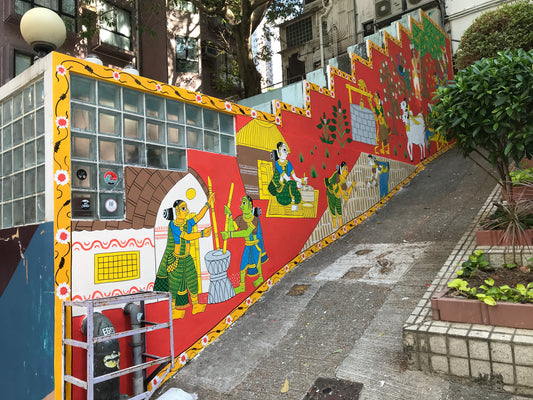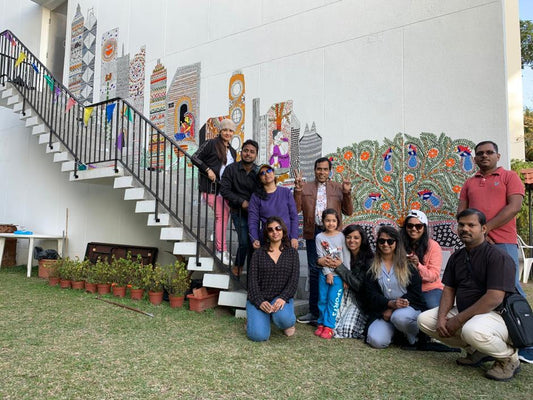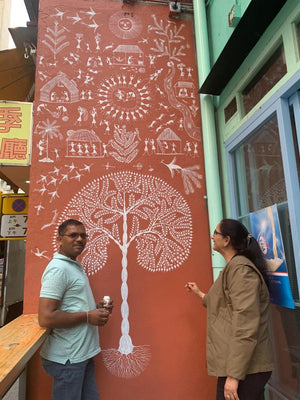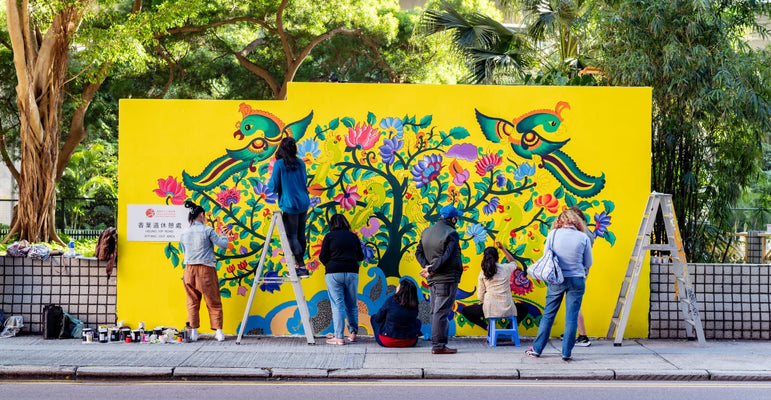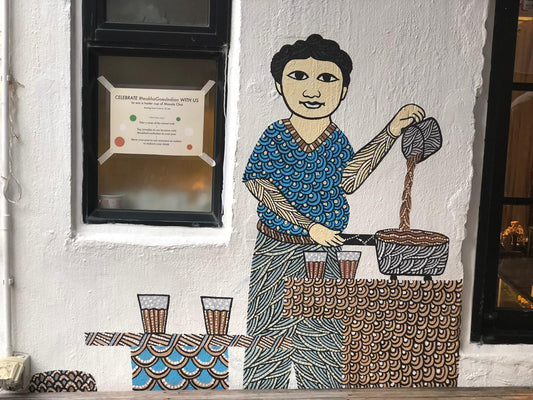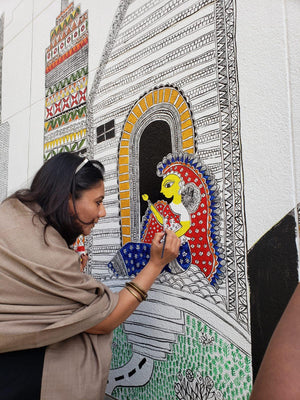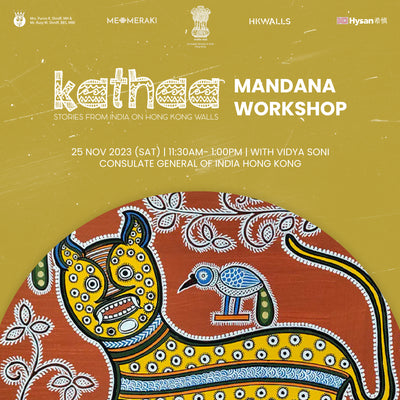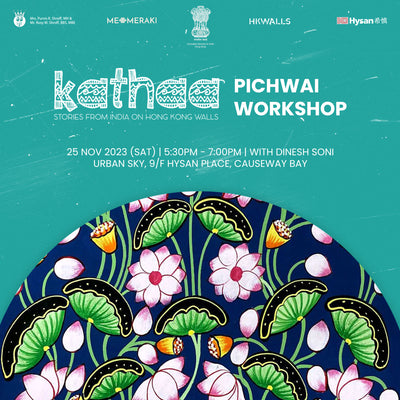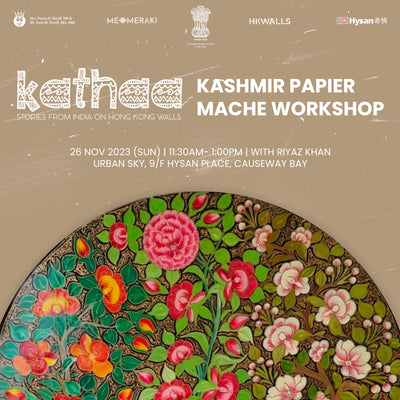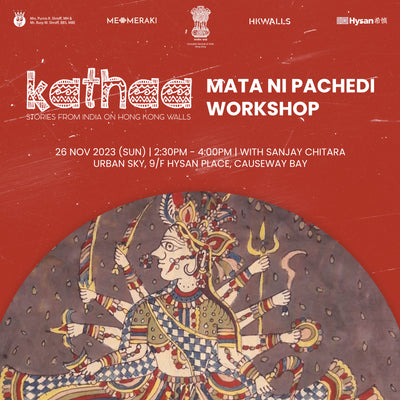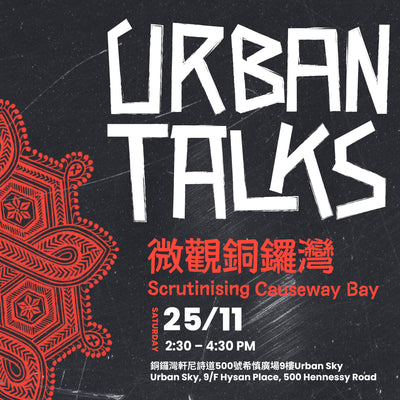What is Kathaa?
Kathaa- Stories from India on Hong Kong walls, is an annual celebration of Indian heritage art that showcases the diversity and richness of India's cultural heritage. It is a platform for artists to showcase their work and for participants and the broader community to experience the beauty of Indian art.
The festival features a wide range of traditional art forms and wall murals. It also includes workshops, demonstrations, and collaborations with other organizations to promote Indian traditional art in Hong Kong and globally. The mission for this Festival is to empower Indian master artists, promote cultural exchange, and foster understanding between different communities and cultures.


Kathaa '23 Collection
Explore our exclusive collection of Kathaa 2023 Artworks. A curated collection featuring some of the finest artworks by Vidya Soni (Mandana), Riyaz Ahmed Khan (Kashmir Paper Mache), Sanjay Chitara (Mata-Ni-Pachedi), and Dinesh Soni (Pichwai).
Featured Artist
Vidya Soni
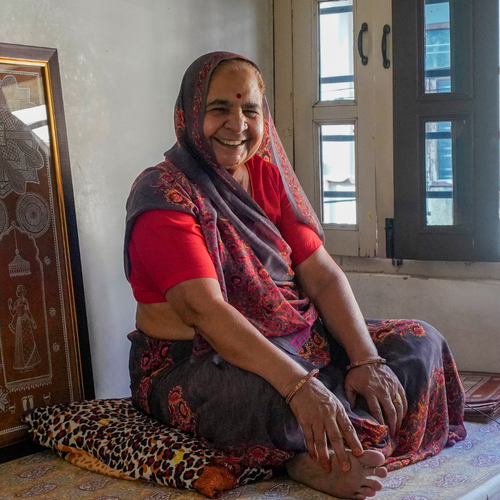
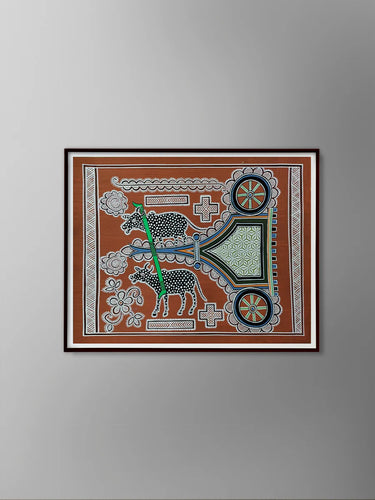
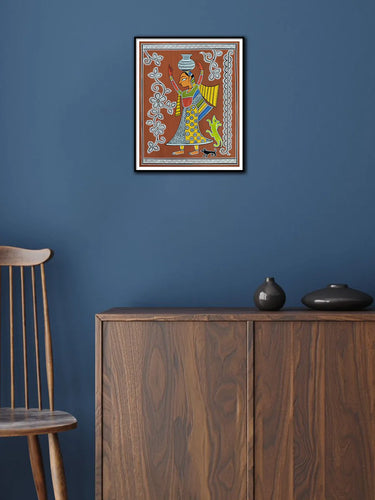
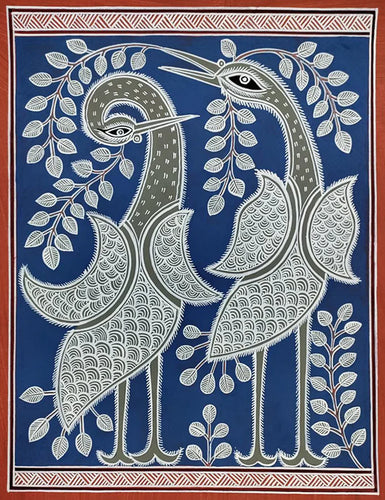

Mandana
Mandana Paintings, one of the oldest forms of tribal art of India is predominantly done by the Meena community in Rajasthan and Madhya Pradesh. One of the incredible feats of Mandana art is that it isn’t taught through mere formal training but passed along as girls learn it by observing their mothers. In a way, it is seen as a skill that has connected women over generations. These paintings
are often seen on walls and floors of rural mud houses, keeping the place ornamental. The theme differs from animals such as peacocks and elephants to wells and water bodies. Even without colour, it portrays a distinctive and diverse design that binds
several generations together.
Relevance to the theme for Kathaa 2023: Mandana is deeply rooted in the culture of Rajasthan, and it is a tradition that brings communities together. It is often practiced during festivals, weddings, and other significant occasions. In this sense, Mandana represents a form of cultural unity where members of the community come together to create these intricate designs, strengthening their bonds through shared traditions. Mandana is passed down through generations, and its practice continues to unify people in the preservation of their cultural heritage. It's a reminder of the unity of tradition, as it connects the past with the present and ensures that cultural practices endure.
Featured Artist
Sanjay Chittara
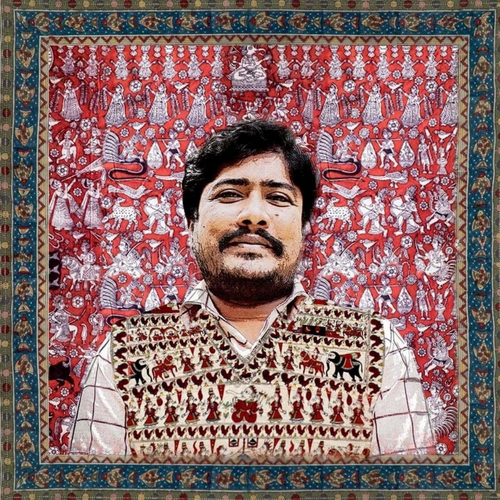
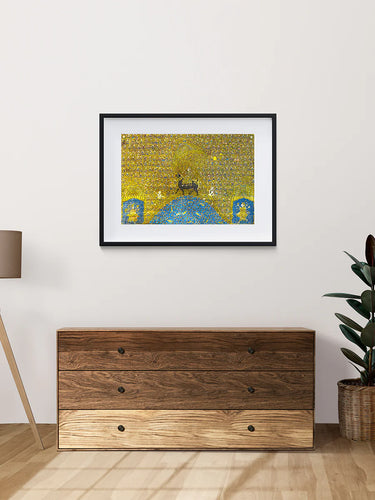
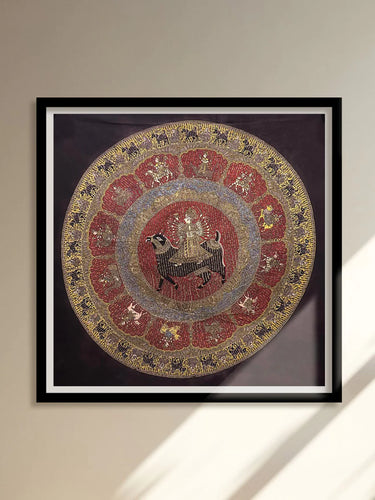
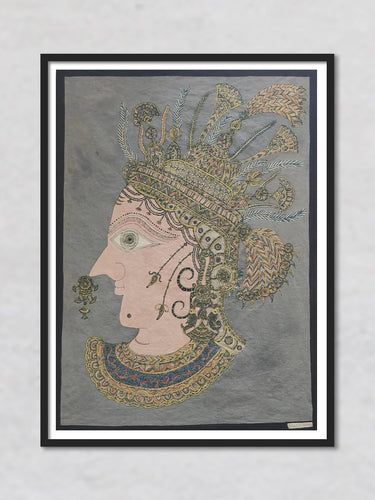

Mata Ni Pachedi
Mata-ni-Pachedi is a traditional art of painting the image of goddesses on a piece of fabric found in the temple that is colourful animated pictures of gods and goddesses, devotees and flora and wildlife with a narrative theme. Mata-ni-Pachedi comes from the Gujarati language, where Mata means "goddess", ni means "belongs to", and Pachedi means "behind." When the nomadic Vaghari population of Gujarat was forbidden from attending temples, they created their own shrines on cloth with representations of the Mother Goddess in various shapes. The product layout of four to five pieces of Mata-ni-Pachedi built to make a shrine for the Mother Goddess is the distinctive feature of this temple-hanging.
Relevance to the theme for Kathaa 2023: In Mata ni Pachedi art, Goddesses like Durga are often portrayed as formidable and empowered beings. Mata ni Pachedi art prominently features powerful Goddesses challenging gender stereotypes and showcasing female strength and centrality in narratives. This portrayal promotes the idea of gender equality by emphasizing women's significance in spiritual contexts.
Featured Artist
Dinesh Soni
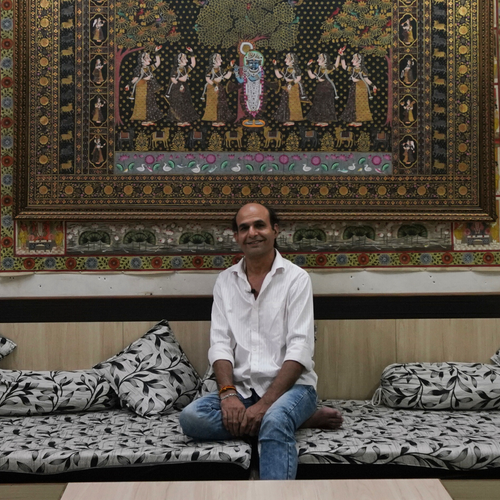
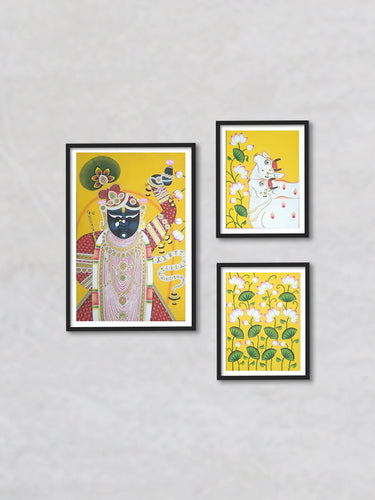
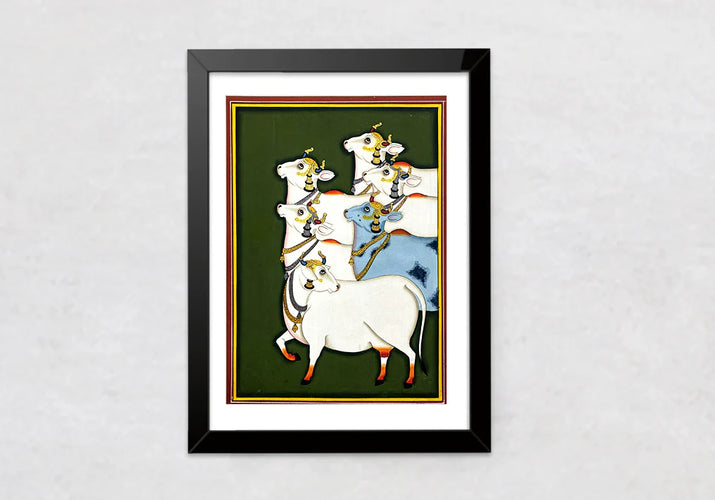
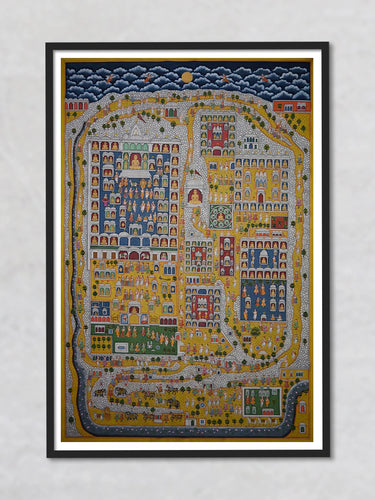

Pichwai
Pichwai paintings, derived from the Sanskrit words "Pichh" (back) and "wai" (hanging), are large Hindu devotional artworks, typically on cloth, depicting Lord Krishna. They serve two vital roles in the Pushtimarg sect. Firstly, they adorn the inner sanctums of shrines, changing daily to align with seasons, festivals, and rituals. These intricate artworks capture the essence of worship, showcasing the ambiance, emotions, music, food, and dance associated with each festival and ritual. Pichwais often depict the eight distinct adornments for daily viewings of Shrinathji. Additionally, they offer historical documentation of participation in these festivals throughout the faith's history. Pichwais also feature elements suitable for public wall murals, such as Kamal Talay, Gau mata under Kadam tree, and scenic views of Braj's landscapes and havelis.
Relevance to the theme for Kathaa 2023: Pichwai embodies love through its narratives, primarily portraying the divine love between Lord Krishna and his devotees like Radha. Vibrant colors, expressive characters, and spiritual symbolism convey the intensity of this love, The characters in Pichwai convey love through their expressive faces, tender gestures, and longing gazes. These subtle details evoke a sense of emotional connection. The use of symbolic elements like the lotus, peacock feathers, and the flute further emphasize the theme of love.
Featured Artist
Riyaz Ahmed Khan
Beyond his artistic endeavors, Riyaz is also a philosopher who advocates for unity and rejects the establishment of differences. Riyaz's talent has earned him international recognition, with his sculptures being exhibited in prestigious galleries and museums worldwide. Notably, he has received accolades like the National Award for Excellence in Folk Art from the Government of India, the Award of Merit from the World Crafts Council, and a Special Mention from the Prince Claus Fund. As an artist and part philosopher, Riyaz Ahmed's work stands as a tribute to the beauty and heritage of Kashmir, leaving an indelible mark on the art world and inspiring young artists in his homeland and beyond.
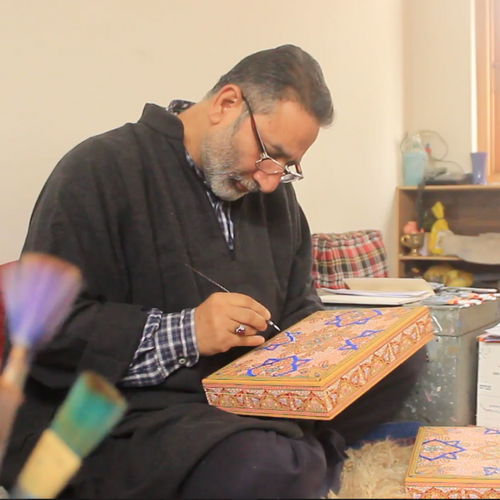
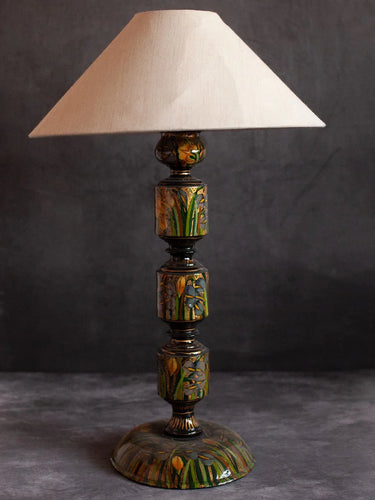
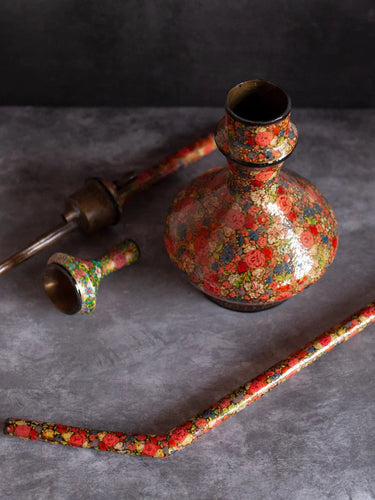
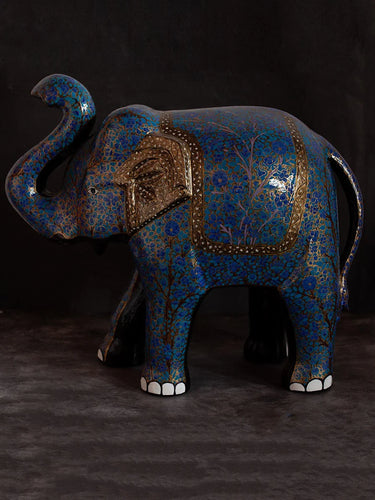

Paper Mache
Brought from Samarkand to Kashmir by a Kashmiri Prince, the Persian art form of Paper Mache has evolved to new heights in Kashmir. It is based primarily on paper pulp, and is a richly decorated, colourful artifact; generally in the form of vases, bowls, or cups (with and without metal rims), boxes, trays, bases of lamps, and many other small objects. These are made in homes, and
workshops, in Srinagar, and other parts of the Kashmir Valley, and are marketed primarily within India, although there is a significant international market. Kashmiri Paper Mache pieces are characterized by their calming aesthetics.
Relevance to the theme for Kathaa 2023: The intricate floral patterns, tranquil landscapes, and gentle color palettes create an ambiance of peace and serenity. When one looks at these works, the meticulous detailing of dense foliage, floral patterns, landscapes take you to the world of visual harmony and calmness. The craft's history in Kashmir reflects the region's unique cultural blend, influenced by Persian and Central Asian cultures. The celebration of this diversity represents a direct message of peace through the acceptance of different cultural traditions. Amidst the backdrop of challenges and turmoil that Kashmir has faced, the art of Kashmiri Paper Mache emerges as a symbol of peace and hope.
Gallery
